Growing up in Pilar, Bataan, almost every house had talong growing in their backyard. My lola's garden was no different. Her prized eggplants would climb up bamboo stakes, their purple flowers eventually turning into glossy fruits perfect for picking. We'd harvest them in the morning when they were firm and fresh, their deep purple skin still covered in morning dew.
This Binagoongang Talong recipe reminds me of those simpler times, when lunch meant walking to the backyard, plucking a few ripe eggplants, and transforming them into something good with bagoong alamang from the local market.
It's amazing how these humble backyard vegetables, when combined with fermented shrimp paste and a few aromatics, create such a deeply satisfying dish that brings comfort to any Filipino table.
Cultural Notes
Binagoongang Talong represents Filipino cuisine's mastery of umami flavors through fermented ingredients. This dish showcases how humble ingredients transform into extraordinary meals through traditional cooking methods.
Jump to:
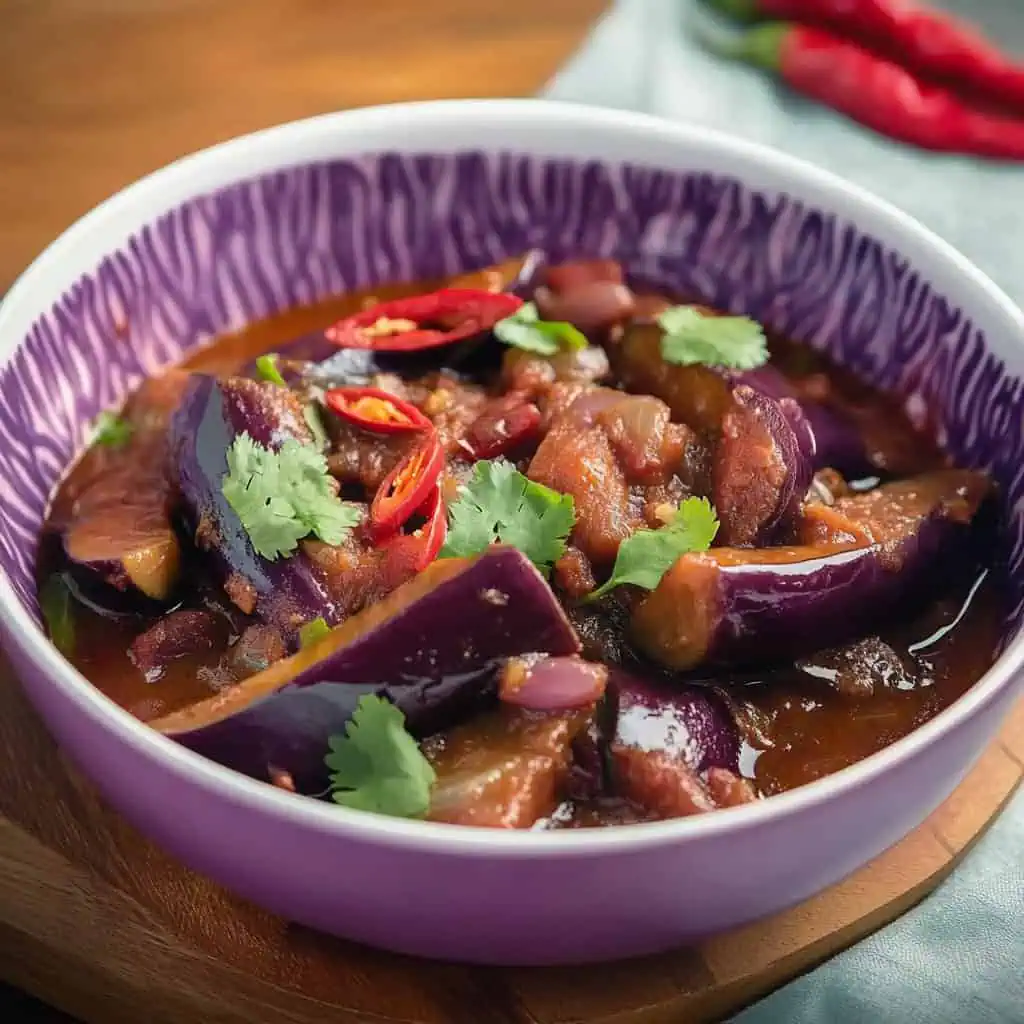
Why You'll Love This Recipe
- Authentic Flavor: Experience the true taste of Filipino home cooking with perfectly balanced savory, spicy, and slightly sweet notes
- Budget-Friendly: Uses simple, accessible ingredients to create a flavorful main dish
- Versatile: Can be made vegetarian or with pork for added richness
- Nutritious: Eggplants are rich in antioxidants and fiber
- Make-Ahead Friendly: Tastes even better the next day as flavors develop
Ingredients
This recipe combines the mild, creamy texture of eggplants with umami-rich shrimp paste for depth of flavor. Garlic, onions, and tomatoes create a savory base, while chilies add gentle heat.
The brown sugar and vinegar balance the saltiness of the bagoong, creating that perfect sweet-sour-salty harmony that defines Filipino cooking. Optional pork adds richness, but the dish remains delicious even without it.
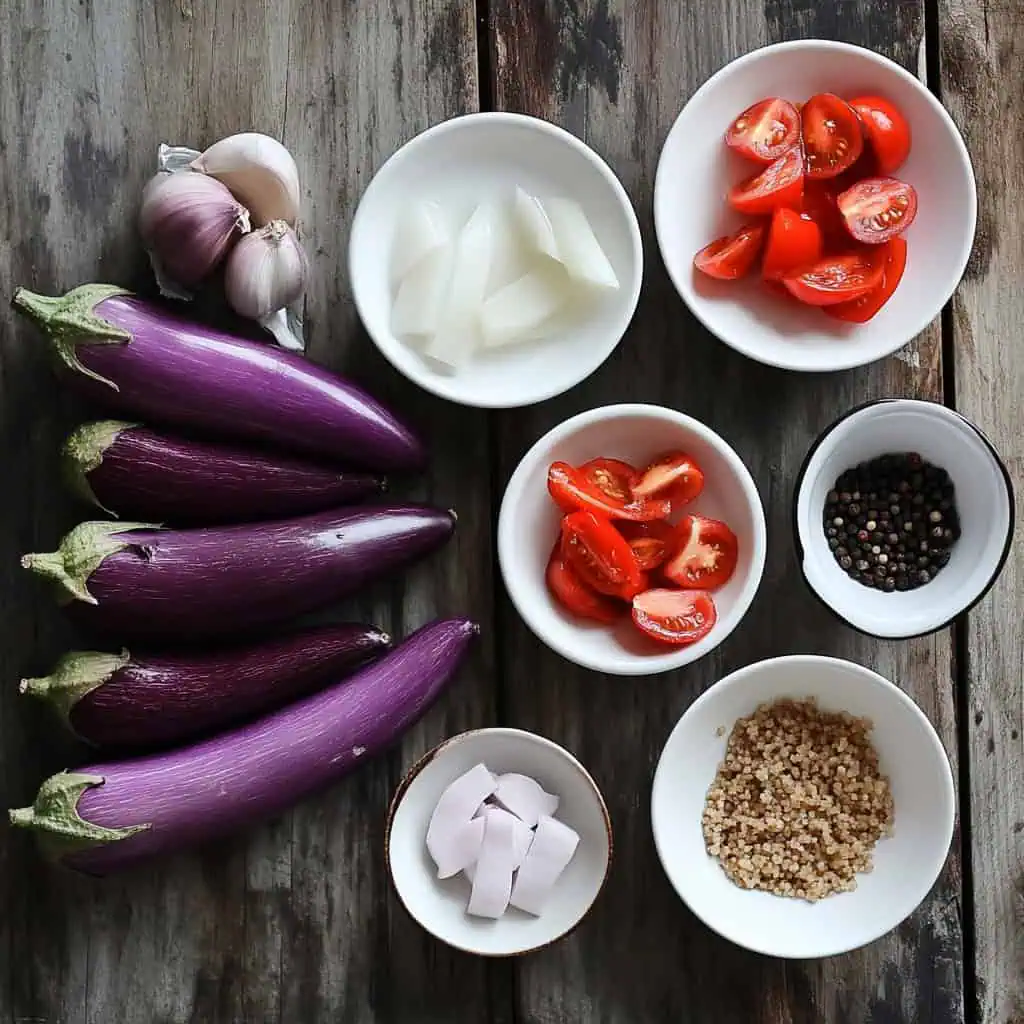
- 2 large eggplants, sliced diagonally
- 3½ tablespoons bagoong alamang (fermented shrimp paste)
- 3 ounces pork belly (optional), cut into small pieces
- 4 pieces finger chilies (siling pangsigang), chopped
- 3 cloves garlic, minced
- 1 medium onion, chopped
- 1 ripe tomato, diced
- 1 teaspoon brown sugar
- 1 tablespoon vinegar
- 4 tablespoons cooking oil
- ¾ cup water
- Ground black pepper to taste
Equipment
- Large wok or deep skillet (kawali): Essential for properly frying eggplants and cooking the sauce with enough space for stirring
- Wooden spatula (sandok): Allows for gentle stirring without breaking the delicate eggplant pieces
- Sharp knife: For precise cutting of vegetables, especially important for diagonal eggplant slices
- Cutting board: Provides a stable surface for preparation of ingredients
- Measuring spoons: Ensures accurate seasoning for balanced flavors
- Paper towels: Helps absorb excess oil from fried eggplants, preventing an overly greasy dish
- Heat-resistant bowl: For resting cooked eggplant pieces before combining with sauce

How To Make
- Heat oil in a kawali (deep pan) over medium heat (350°F/175°C). Once hot, fry the eggplant slices for 1½ minutes on each side until golden brown. Remove the eggplants and set aside on paper towels to drain excess oil.
- Using the remaining oil in the same pan, lower the heat to medium-low (300°F/150°C). Add the chopped garlic and sauté until light brown, about 1 minute. Add the chopped onions and diced tomatoes, then cook until the onions become soft and translucent, about 3-4 minutes.
- If using pork, add it now and cook until it turns light brown, about 5-6 minutes. Add the chopped chili peppers and stir for another minute.
- Add the bagoong alamang (shrimp paste) and cook for 1 minute, stirring to combine all ingredients. Pour in the water and vinegar, then bring the mixture to a boil. Let it simmer for 3-5 minutes to develop the flavors.
- Gently add back the fried eggplants to the pan. Stir carefully to avoid breaking the eggplants and cook for 1½ minutes. Add the brown sugar and ground black pepper, then stir gently to combine.
- Taste and adjust the seasoning if needed. Transfer to a serving bowl and serve hot with steamed rice. For best results, let the dish rest for 5 minutes before serving to allow the flavors to settle.

Tips from Lola's Kitchen
- Eggplant Selection: Choose firm, glossy eggplants without blemishes for the best texture and flavor. Native Filipino eggplants (smaller and more slender) offer the most authentic taste.
- Remove Bitterness: Salt the eggplant slices and let them sit for 15 minutes before rinsing. This draws out any bitterness and improves the final texture.
- Proper Frying Technique: Don't overcrowd the pan when frying eggplants. Work in batches to ensure each slice gets crispy edges while maintaining a tender interior.
- Bagoong Management: Different brands of bagoong vary in saltiness. Start with less than the recipe calls for, then adjust to taste.
- Layered Cooking: Building flavors in stages is crucial - properly browning the garlic first, followed by onions and tomatoes creates a depth of flavor that elevates the dish.
- Gentle Handling: When adding eggplants back to the sauce, fold them in gently rather than stirring vigorously to keep them intact.
Substitutions
- Bagoong Alamang: Thai shrimp paste can work in a pinch, though it may be more concentrated. Start with half the amount and adjust to taste.
- Protein Options: Instead of pork belly, try using ground pork, chicken thigh pieces, shrimp, or firm tofu cubes for a different protein experience.
- Chili Alternatives: Jalapeños provide moderate heat, while bird's eye chilies (siling labuyo) deliver more intense spiciness. Bell peppers work for a no-heat version.
- Vinegar Variations: While cane vinegar (sukang iloko) is traditional, apple cider vinegar or rice vinegar can substitute with slight flavor differences.
- Sweetener Options: Palm sugar (panutsa) can replace brown sugar for a more caramel-like sweetness, or use regular white sugar with a slight reduction in quantity.
Troubleshooting
- Eggplants Too Oily: Ensure oil is hot enough before frying (test with a wooden chopstick - it should bubble around it). Drain thoroughly on paper towels after frying.
- Sauce Too Salty: Balance with additional brown sugar, a splash of vinegar, or dilute with a small amount of water and reduce.
- Sauce Too Thin: Continue simmering uncovered to reduce and concentrate flavors. For a quick fix, remove some eggplant, stir 1 teaspoon cornstarch with 1 tablespoon water, add to sauce, and simmer until thickened.
- Eggplants Breaking Apart: Your eggplants might be overripe or overcooked. Choose firmer eggplants and reduce frying time slightly. Also, stir more gently when combining with sauce.
- Lacks Depth of Flavor: Allow the dish to rest for 10-15 minutes before serving, or better yet, make it ahead and reheat - the flavors develop significantly over time.
Storage & Reheating
- Refrigeration: Store in an airtight container for up to 3-4 days. The flavors actually intensify overnight, making this an excellent make-ahead dish.
- Freezing: Not recommended as the texture of eggplant significantly deteriorates when frozen and thawed.
- Reheating: Warm gently in a pan over medium-low heat, adding a splash of water if the sauce has thickened too much. Cover and heat until just warmed through to prevent overcooking the eggplants.
- Serving After Storage: A fresh squeeze of calamansi or lime juice and a sprinkle of chopped green onions can revitalize the dish after refrigeration.
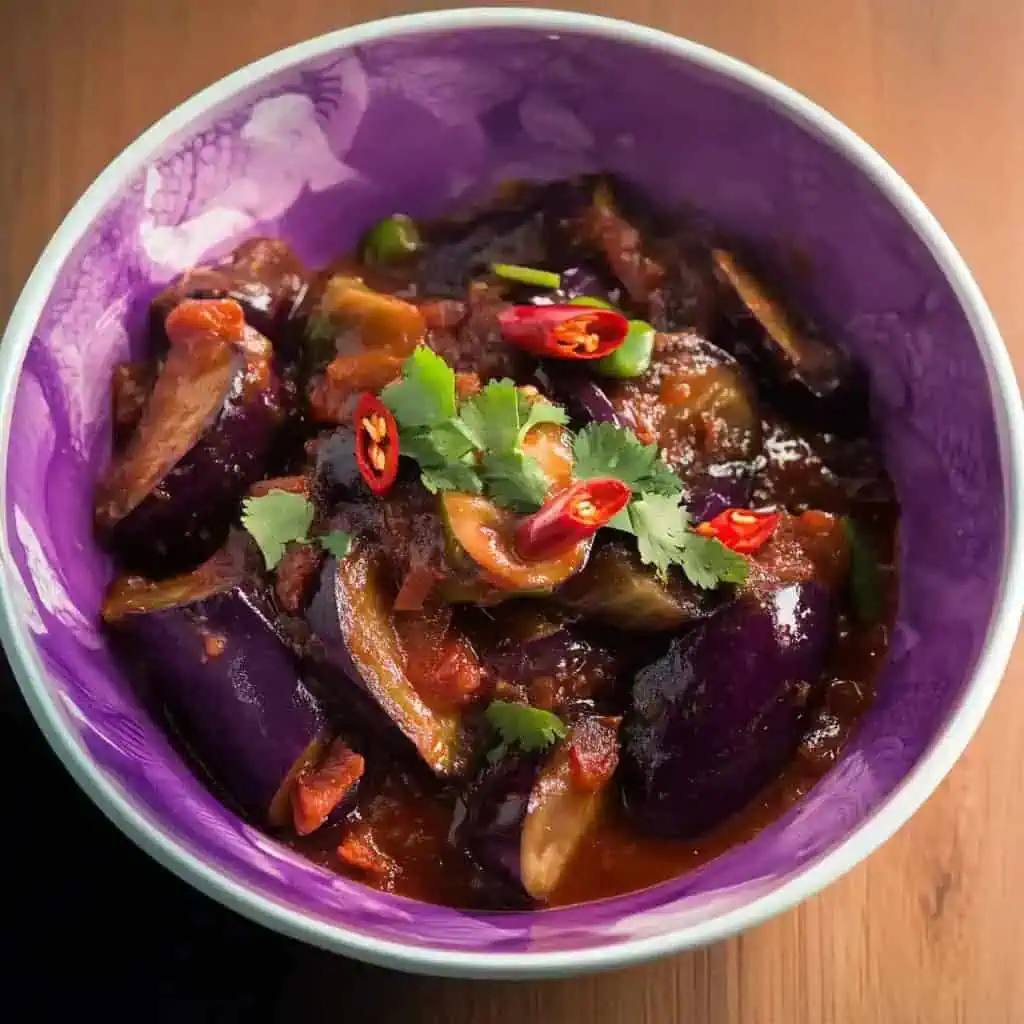
FAQ
Can I make this dish less spicy but still flavorful?
Absolutely! Remove the seeds from the chilies before cooking, or substitute with mild bell peppers. The bagoong still provides plenty of flavor without the heat.
My bagoong alamang is very salty. How can I adjust the recipe?
Rinse your bagoong briefly with water before using, or reduce the amount to 2 tablespoons and add salt later if needed. Increasing the vinegar and sugar slightly also helps balance high salt content.
How can I make this dish completely vegetarian?
Omit the pork and use vegetarian shrimp paste (available in some Asian markets) or substitute with miso paste mixed with a small amount of seaweed for an umami-rich alternative.
Can I prepare this dish in advance for a party?
Yes! In fact, the flavors improve after resting. Prepare the dish up to a day ahead, refrigerate, and gently reheat before serving. Add a splash of water when reheating if needed.
Which type of eggplant works best for this recipe?
Asian eggplants (long, slender type) or Filipino eggplants work best as they're less bitter and have fewer seeds than globe eggplants. However, any variety will work with proper preparation.
Can I add other vegetables to this dish?
Yes! Okra, bitter gourd (ampalaya), or string beans make excellent additions. Add them after the pork has browned but before the eggplant returns to the pan.
Related
Looking for other recipes like this? Try these:
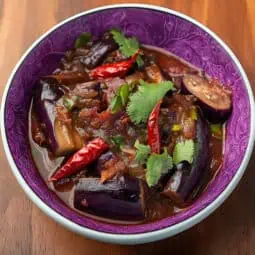
Binagoongang Talong (Filipino Eggplant with Shrimp Paste)
Equipment
- Large wok or deep skillet (kawali) For frying eggplants and cooking the sauce
- Wooden spatula (sandok) For gentle stirring without breaking the eggplants
- Sharp knife For precise cutting of vegetables
- Cutting board For preparation of ingredients
- Measuring Spoons For accurate seasoning
- Paper towels For draining excess oil from fried eggplants
Ingredients
- 2 large eggplants talong, sliced diagonally
- 3½ tablespoons bagoong alamang fermented shrimp paste
- 3 ounces pork belly optional, cut into small pieces
- 4 pieces siling pangsigang finger chilies, chopped
- 3 cloves bawang garlic, minced
- 1 piece sibuyas onion, chopped
- 1 piece kamatis tomato, diced
- 1 teaspoon brown sugar asukal na pula
- 1 tablespoon suka vinegar
- 4 tablespoons cooking oil mantika
- ¾ cup tubig water
- Ground black pepper paminta to taste
Instructions
- Heat oil in a kawali (deep pan) over medium heat (350°F/175°C). Once hot, fry the eggplant slices for 1½ minutes on each side until golden brown. Remove the eggplants and set aside on paper towels to drain excess oil.
- Using the remaining oil in the same pan, lower the heat to medium-low (300°F/150°C). Add the chopped garlic and sauté until light brown, about 1 minute. Add the chopped onions and diced tomatoes, then cook until the onions become soft and translucent, about 3-4 minutes.
- If using pork, add it now and cook until it turns light brown, about 5-6 minutes. Add the chopped chili peppers and stir for another minute.
- Add the bagoong alamang (shrimp paste) and cook for 1 minute, stirring to combine all ingredients. Pour in the water and vinegar, then bring the mixture to a boil. Let it simmer for 3-5 minutes to develop the flavors.
- Gently add back the fried eggplants to the pan. Stir carefully to avoid breaking the eggplants and cook for 1½ minutes. Add the brown sugar and ground black pepper, then stir gently to combine.
- Taste and adjust the seasoning if needed. Transfer to a serving bowl and serve hot with steamed rice. For best results, let the dish rest for 5 minutes before serving to allow the flavors to settle.
Tips from Lola's Kitchen
- Choose firm, glossy eggplants without blemishes
- Salt the eggplant slices and let them sit for 15 minutes to remove bitterness
- Don't overcrowd the pan when frying eggplants
- Adjust the amount of chili peppers based on your heat preference
- For best results, use native Filipino eggplants (they're smaller and more flavorful)
Nutrition
The Story Behind Binagoongang Talong
In every corner of the Philippines, from busy Manila kitchens to quiet provincial homes, you'll find eggplants growing abundantly in backyards and community gardens. This accessibility, combined with our ancestors' mastery of fermentation through bagoong alamang (shrimp paste), gave birth to one of our most beloved home-cooked dishes: Binagoongang Talong.
The dish's origins can be traced to our coastal communities, where shrimp paste-making flourished as a preservation technique. Fishing families would ferment tiny shrimp to create bagoong, a practice that dates back centuries before refrigeration. When combined with eggplants - a vegetable that grows year-round in our tropical climate - it created a practical yet flavorful dish that could feed an entire family affordably.
What makes Binagoongang Talong truly special is how it reflects Filipino culinary wisdom. The recipe demonstrates our knack for balancing flavors: the earthiness of eggplants, the umami-rich bagoong, the sharp heat of chilies, and the subtle sweetness of onions and tomatoes. The optional addition of pork, a later adaptation, shows how the dish evolved with changing times and tastes.
In many Filipino households, this dish became a reliable "ulam" (viand) during the rainy season when fresh vegetables were scarce. The hardy eggplants could withstand heavy rains, and the preserved bagoong was always ready in the kitchen. Today, Binagoongang Talong remains a testament to Filipino resourcefulness, transforming simple ingredients into a dish that's greater than the sum of its parts.
Modern Filipino cooks continue to adapt this classic, creating variations with different proteins or adding coconut milk for richness. Yet the heart of the dish remains unchanged - it's still the same comforting, umami-rich meal that has graced Filipino tables for generations. Whether served in humble carinderias (local eateries) or upscale Filipino restaurants, Binagoongang Talong carries with it the story of our people's ingenuity and our deep connection to the land and sea.
This dish isn't just about sustenance - it's about heritage, resourcefulness, and the Filipino talent for creating extraordinary flavors from ordinary ingredients. Every bite of Binagoongang Talong tells the story of our ancestors' wisdom in preserving food, our agricultural abundance, and our love for bold, satisfying flavors that bring families together at the dining table.
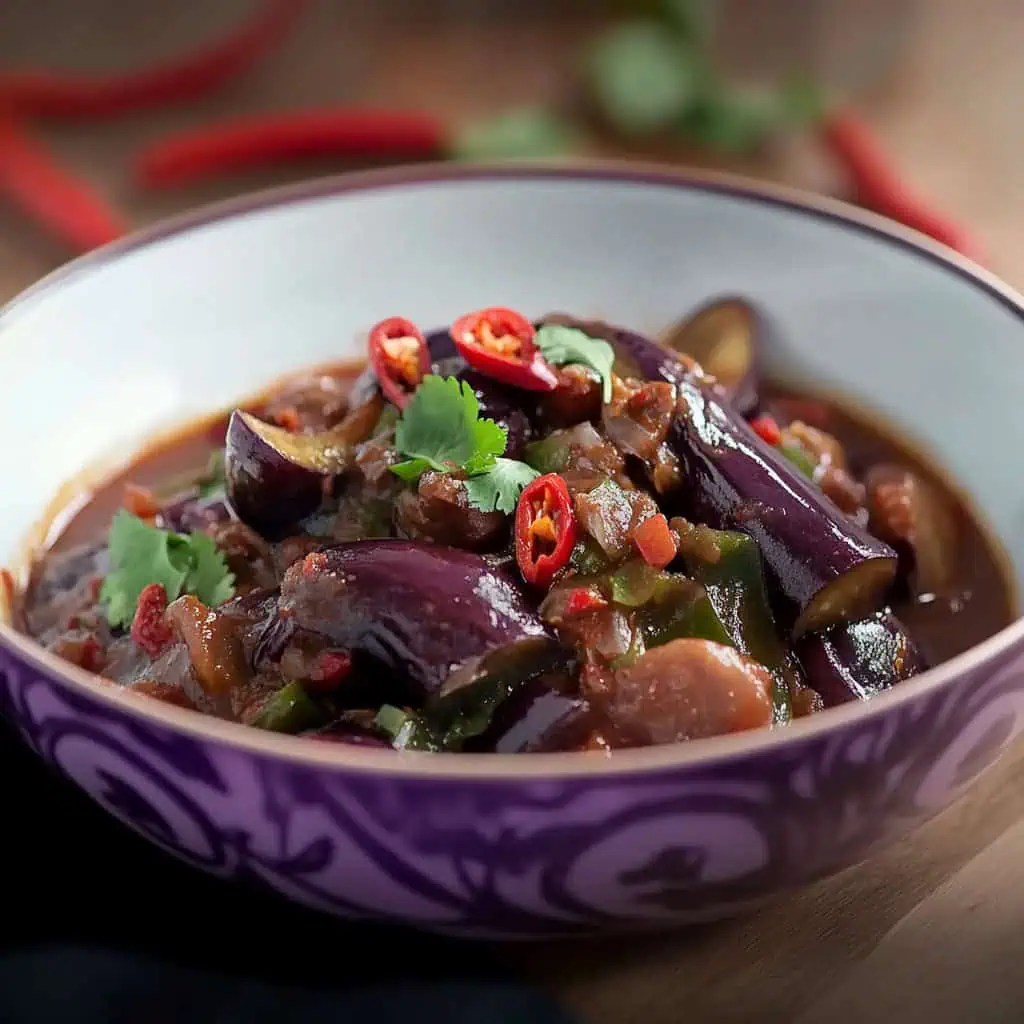





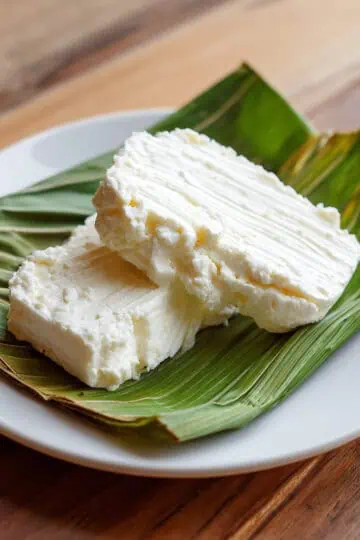
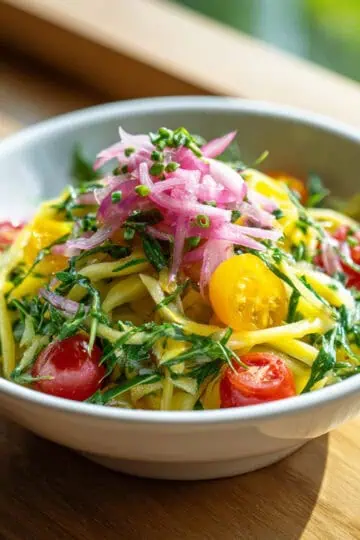
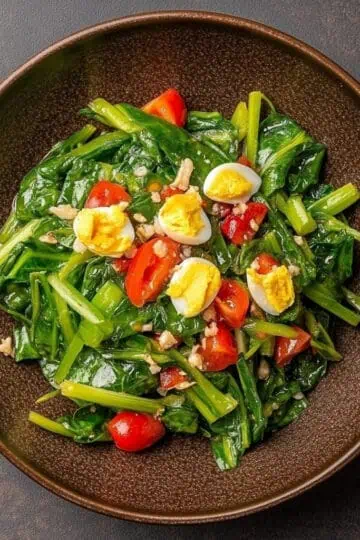

Comments
No Comments